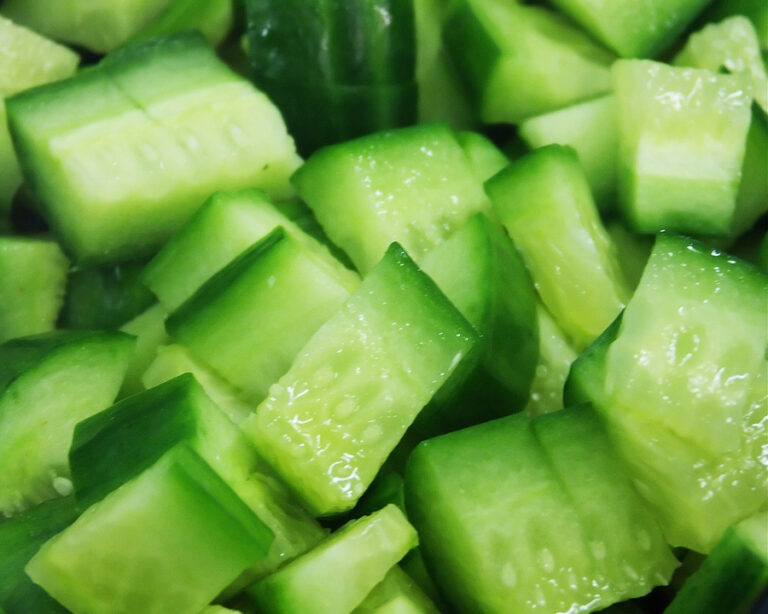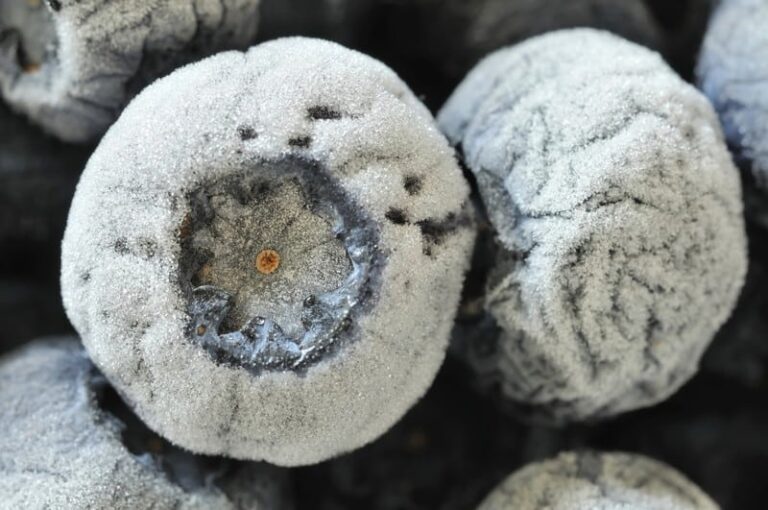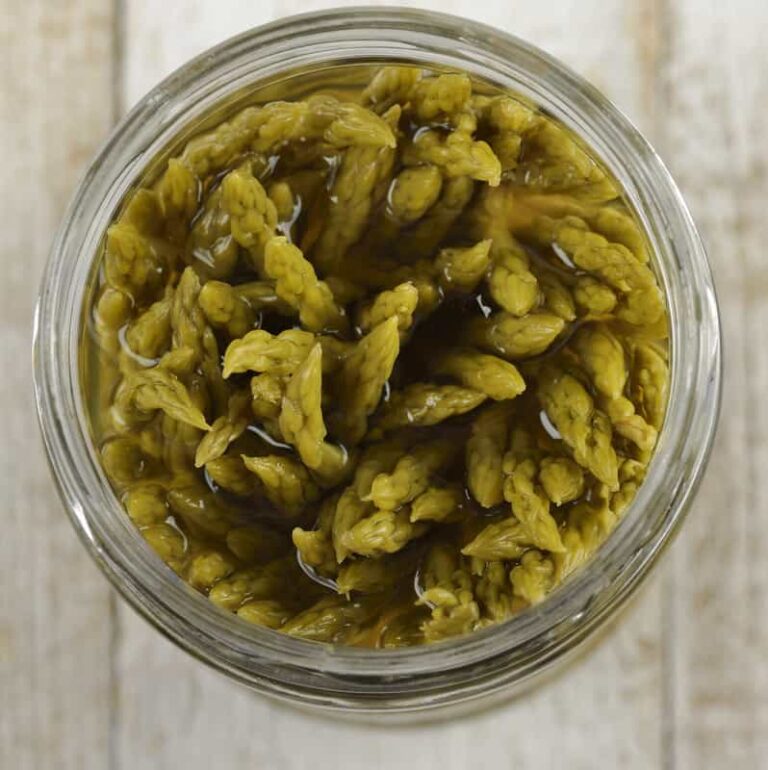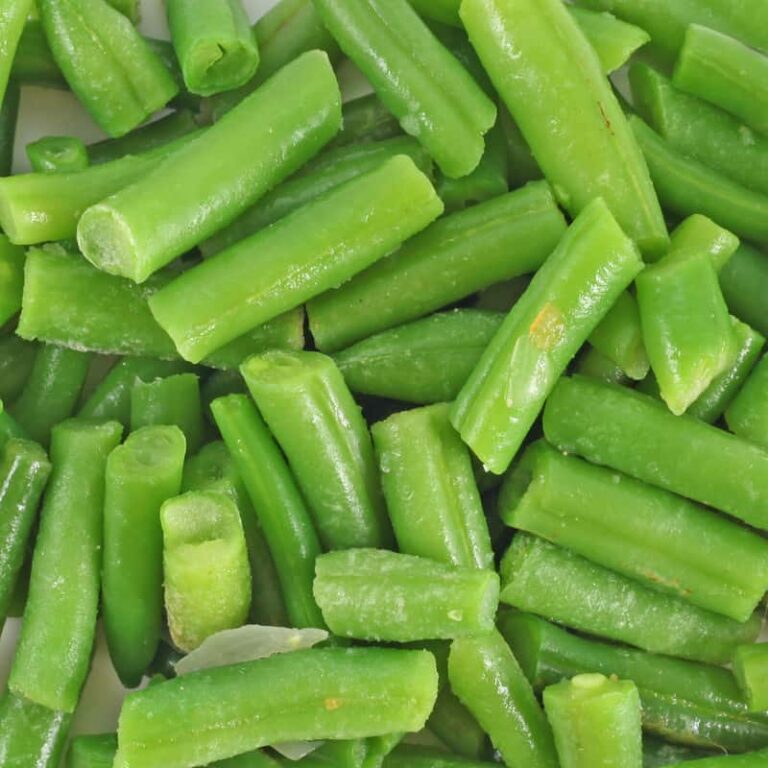How to Blanch Vegetables Before Freezing
Blanch just harvested fresh vegetables to set their color and seal nutrients and flavor.
Blanching is a method of partially cooking vegetables in boiling water or steam—usually for a few minutes; it’s also called parboiling.
Blanching is used to seal the flavor and set the color of vegetables before freezing.
Blanched and frozen vegetables can be cooked later—the flavor, color, and texture are almost wholly, but not fully, preserved.
Blanching slows or stops the action of enzymes which cause loss of flavor, color, and texture. Blanching cleanses the surface of dirt and organisms, brightens their color, and helps retard the loss of vitamins.
How to blanch vegetables in water
- Bring a pot of water to a boil.
- Add the vegetable into the pot of boiling water slowly so as not to disrupt the boil. Reduce the heat and simmer the food in the uncovered pot for about 30 seconds. (Use a pot with a pasta insert or steam basket to make it easier to retrieve the blanched food from the boiling water and to plunge the food into an ice water bath).
- Remove the food from the pot and immediately plunge it into a bowl of ice water to stop the cooking process, sometimes referred to as “shocking.” If you use a strainer to shock the vegetables, you can simply lift the strainer from the ice bath after the vegetables have cooled and allow the water to drain back into the bowl.
- Blanch vegetables in batches. A large amount of food will bring boiling water to a halt—which will slowly cook the food not blanch it.
- Blanched vegetables can be frozen after they have dried. Place the food on a rack or a towel until it has thoroughly dried (you can put a fan in front of the food to quicken the process) then seal it in a zipper-lock freezer bag.
The time for blanching varies with specific vegetables. In general, you boil or blanch until the vegetable is tender-crisp.
Vegetable blanching times
- Artichoke hearts: 7 minutes
- Asparagus: 2-4 minutes depending on the size of the stalk, small to large.
- Beans, snap, green, or wax: 3 minutes
- Beans, Lima, and butter: 2-4 minutes depending on size.
- Brussel sprouts: 3-5 minutes depending on size, small to large.
- Carrots: 2-5 minutes, depending on size, small or sliced.
- Corn-on-the-cob: 7-11 minutes depending on the size of the ears.
- Corn kernels: 4 minutes
- Eggplant: 4 minutes
- Kohlrabi: 3 minutes, whole
- Okra: 3-4 minutes, depending on the size of the pod.
- Peas, edible pod: 1½-3 minutes
- Peas, green: 1½ minutes
- Peppers, Sweet peppers: 2-3 minutes, depending on size from strips to halves.
- Rutabagas: 3 minutes
- Squash, summer: 3 minutes (cook winter squash)
- Turnips: 2 minutes
Under-blanching stimulates the activity of enzymes and is worse than no blanching. Over-blanching causes loss of flavor, color, vitamins, and minerals.
Blanching to remove vegetable skins
Blanching is also used to make the skins of foods such as tomatoes, peaches, plums, and onions easier to peel. Here’s the method:
- Core the tomato with a paring knife and remove the stem and white center. For a peach, remove the stem.
- Cut an X in the skin on the bottom of the tomato or peach.
- Immerse the food in boiling water for 20 or 30 seconds, depending on the size and amount of food. Remove and plunge into ice water.
- When the vegetable or fruit has cooled, use the edge of a knife to slip off the skin.
Related articles:
More kitchen tips:
Bring your harvest to the table. Kitchen prep tips and easy recipes for the vegetables you grow. Click below for vegetable prep and recipes you can use now.
- Almonds
- Apples
- Apricot
- Aprium
- Artichoke
- Arugula
- Asparagus
- Avocado
- Bamboo Shoots
- Banana
- Basil
- Beans, Dried
- Beans. Long
- Beans, Shell
- Beans, Snap
- Beets
- Bitter Melon
- Blackberry
- Bok Choy
- Broccoli
- Broccoli Raab
- Brussels Sprouts
- Cabbage
- Cardoon
- Carrots
- Cauliflower
- Celeriac
- Celery
- Chard
- Chayote Squash
- Cherimoya
- Cherries
- Chestnut
- Chickpea
- Chinese Cabbage
- Chives
- Cilantro
- Citron
- Clementine
- Collards
- Coriander
- Corn, Sweet
- Corn, Baby
- Corn Salad, Mache
- Cranberry
- Cress
- Cucumber
- Daikon
- Dandelion
- Dill
- Eggplant
- Endive, Belgian
- Endive and Escarole
- Fava Beans
- Fig
- Florence Fennel
- Garlic
- Ginger
- Grapefruit
- Grapes
- Guava
- Horseradish
- Jerusalem Artichoke
- Jicama
- Jujube
- Kale
- Kiwifruit
- Kohlrabi
- Kumquat
- Leeks
- Lemongrass
- Lemons
- Lettuce
- Lime
- Mache (Corn Salad)
- Mandarin Orange
- Mango
- Maple Syrup
- Marjoram
- Melons
- Michihili
- Mint
- Mizuna
- Mushrooms
- Mushrooms, Cremini
- Mustard Greens
- Napa Cabbage
- Nectarine
- Okra
- Olives
- Olive oil
- Onions
- Oranges
- Oregano
- Parsley
- Parsley Root
- Parsnips
- Passion Fruit
- Pawpaw
- Peaches
- Pears
- Peas, Garden Snap
- Peas, Snow
- Pei Tsai
- Peppers, Chili
- Peppers, Sweet
- Persimmon
- Pineapple
- Pineapple Guava
- Plantain
- Plums
- Pluots
- Pomegranate
- Potatoes
- Prickly Pear
- Pumpkin
- Quince
- Radicchio
- Radishes
- Raspberries
- Rosemary
- Rhubarb
- Rutabaga
- Sage
- Salsify
- Sauerkraut
- Savory
- Shallots
- Sorrel
- Spinach
- Squash, Summer
- Squash, Winter
- Strawberries
- Sunchokes
- Sunflower
- Sweet Potato
- Swiss Chard
- Tangerine
- Taro
- Tarragon
- Thyme
- Tomatillo
- Tomato
- Turnip
- Turnip Greens
- Yams
Harvest tips:
Learn when and how to harvest your favorite vegetables for the best flavor and texture. Get storage tips for each crop. Click on the vegetable you are growing below.
- Artichoke
- Arugula
- Asparagus
- Beans
- Beets
- Broccoli
- Brussels Sprouts
- Cabbage
- Cantaloupe — Melons
- Carrots
- Cauliflower
- Celery
- Chard
- Collards
- Corn, Sweet
- Cucumbers
- Eggplant
- Endive and Escarole
- Garlic
- Jerusalem Artichoke
- Kale
- Kohlrabi
- Leeks
- Lettuce
- Melons
- Okra
- Onions
- Parsnips
- Peas
- Peppers
- Potatoes
- Pumpkins
- Radicchio
- Rhubarb
- Rutabaga
- Spinach
- Squash, Summer
- Squash, Winter
- Sunchokes
- Sweet Potato
- Swiss Chard
- Tomatillo
- Tomatoes
- Turnips
- Watermelon







